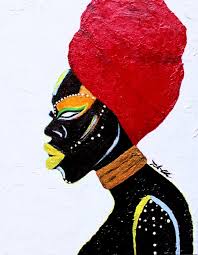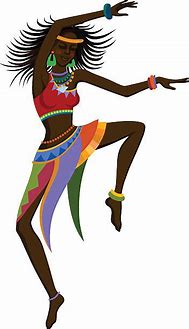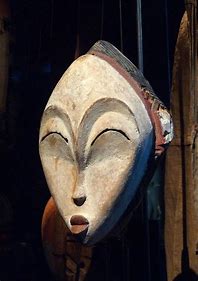Saudi’s King Salman leaves hospital after having pacemaker battery changed













Saudi’s King Salman leaves hospital after having pacemaker battery changed
Saudi Arabia’s octogenarian monarch has undergone medical tests and had the battery of his pacemaker changed, the state-run Saudi Press Agency reported on Wednesday.
King Salman will rest for several days following the procedure and “successful medical tests”, the news agency said.
Government-produced images showed the 86-year-old leaving the King Faisal Specialist Hospital in the capital, Riyadh, hunched forward and using a cane, but otherwise walking unassisted.
He was accompanied by an entourage that included his son, Crown Prince Mohammed bin Salman.
Provided by PA Media Saudi Arabia’s Crown Prince Mohammed bin Salman accompanied his father, King Salman, as he left hospital (Victoria Jones/PA)
The monarch’s health is closely watched because he holds absolute power in the kingdom.
He has appointed his 36-year-old son, Prince Mohammed, as his successor, but has already empowered him to lead day-to-day affairs.
The crown prince’s assertive and brazen style of leadership, as well as his consolidation of power and sidelining of potential rivals, has been controversial.
He has denied any involvement in the killing of Saudi writer Jamal Khashoggi, contradicting Western intelligence assessments.
Dodgy 'Diazepam' tablets cause people to collapse and lose their memory in Wakefield
















Dodgy 'Diazepam' tablets cause people to collapse and lose their memory in Wakefield
Police have issued an urgent warning to anyone who has fallen ill after taking illegal 'Diazepam' tablets currently being sold in Wakefield.
Flickr: Stu Smith A general view over rooftops in Wakefield city centre
West Yorkshire Police (WYP) says a number of people have reported feeling unwell after taking the tablets, which are understood to contain "other substances and potentially no Diazepam at all." The tablets are being sold in the city centre, according to the force.
Inspector Paul Foster, of the Wakefield Central Neighbourhood Policing Team, issued a statement today. He said people have experienced serious side effects after taking the drug.
He said: "It has been reported that a number of people who have taken these tablets have collapsed and had no recollection of what happened after taking them. This is a timely reminder of the dangers of taking illegal drugs as you don't always know where they have come from, what is in them and the effects they may have.
"We would urge anyone who has fallen ill after taking drugs to please seek medical assistance immediately."
Millions in China face shutdowns as coronavirus cases surge in worst outbreak for two years














Millions in China face shutdowns as coronavirus cases surge in worst outbreak for two years
Coronavirus cases in China have tripled after a surge in infections in the northeast and tighter controls have been imposed on access to Shanghai as the country battles its worst outbreak for two years.
Reuters A negative COVID-19 test is required from anyone wanting to enter Shanghai, China's most populous city
Bus services in the eastern port city of 24 million people have been suspended and a negative COVID-19 test is required from anyone wanting to enter.
The authorities reported 1,938 new coronavirus cases on the Chinese mainland on Sunday, more than triple the previous day's total.
Around three-quarters of those - 1,412 cases - were in Jilin province in the northeast, where entry to the industrial city of Changchun has been suspended and families told to stay at home.
Associated Press Coronavirus cases have more than tripled on China's mainland. Pic: AP
Stricter measures were introduced after officials decided an earlier response was inadequate.
Zhang Yan, deputy director of the provincial health commission, said: "The emergency response mechanism in some areas is not sound enough."
In Shanghai, China's most populous city, the number of cases rose by 15 to 432.
The city government called on the public not to leave unless necessary.
Although China's infection numbers are relatively low, the authorities are enforcing a "zero tolerance" strategy to find and quarantine every infected person.
In Hong Kong, the local government reported 15,789 new daily cases, down by almost half from Saturday's total.
Its leader, chief executive Carrie Lam, warned on Saturday that the latest infection surge might not yet be past its peak.
Some residents of Cangzhou, a city of 7.3 million people south of Beijing, have also been told to stay at home after nine cases were reported, according to a government notice.
On the mainland, 831 new cases were reported in Changchun, 571 in the nearby provincial capital city of Jilin, 150 in the eastern port city of Qingdao and 60 in Shenzhen, a business centre next to Hong Kong.
Reference: Sky News:
Saffron was first domesticated in Bronze Age Greece, ancient art and genetics suggest












Saffron was first domesticated in Bronze Age Greece, ancient art and genetics suggest
Evidence from both ancient artworks as well as genetics suggests that saffron, the world’s most expensive spice, originated from Bronze Age Greece around 1700 BC or earlier, according to a new review of studies.
Flowers and stigmas of Crocus Sativus, the saffron crocus, lay on a table, during saffron harvest on November 4, 2008 in Tuscany, Italy.: - AFP via Getty Images
The research, published last month in the journal Frontiers in Plant Science, assessed both ancient art and recent genetics to trace the evolutionary origin of saffron Crocus sativus.
“Both ancient artworks and genetics point to Bronze Age Greece, in approximately 1700 BCE or earlier, as the origin of saffron’s domestication,” Ludwig Mann, lead author of the study from Technische Universität Dresden in Germany, said in a statement.
Researchers said the species is difficult to study genetically since it has three copies of every chromosome – instead of the usual two – and a large genome containing a high percentage of difficult-to-sequence repetitive DNA.
And since ancient Crocus remains are not preserved from historic and prehistoric times, scientists assessed ancient artworks that depict saffron-like plants hoping to find specific regions on the planet where the plant grew in the wild.
The Crocus genus, they said, has approximately 250 species, ranging from south and central Europe and north Africa to western China.
Unlike domesticated saffron, which can only be propagated asexually with human help, researchers said that many of the Crocus species reproduce sexually in the wild.
The first known use of wild crocuses by humans was as pigment for cave paintings, approximately 50,000 years ago in modern-day Iraq. Ancient texts from Sumer, Assyria, and Babylonia also describe the use of wild crocuses in medicine and dye, scientists said.
The plant is currently grown across the globe and used in cooking and perfumes and as a yellow dye.
Artworks from the Minoan civilization of ancient Greece are likely the oldest to depict domesticated saffron, they added.
Citing an example, they said the dense patches of Crocus flowers on the fresco ‘The Saffron Gatherers’ from the island of Santorini (approximately 1600 BC) suggest cultivation of these plants.
Another such mural painting on the same island, ‘The Adorants’, they noted, showed flowers with long, dark-red stigmas, that overtop dark violet petals, typical of domesticated saffron.
They found that flowers with these traits are also depicted on ceramics and cloth from Bronze Age Greece.
The results of the review are in line with findings from genetic studies from 2019 which showed that C. cartwrightianus, which only occurs in mainland Greece and Crete, is saffron’s closest wild relative.
Scientists say modern saffron crocus with its three genomes arose naturally from the wild, either exclusively from C. cartwrightianus or from hybrids between C. cartwrightianus and another crocus species.
“Around the globe today, all saffron crocuses are effectively clones dating back to saffron’s emergence in ancient Greece,” Tony Heitkam, leader of the Plant Genomics group at Technische Universität Dresden, said.
“Despite sharing the same genome, saffron can have different properties depending on the region,” Dr Heitkam said, adding that the researchers are currently investigating the molecular causes for this regional variation.
Reference: Independent: Vishwam Sankaran
Articles - Most Read
- Home
- LIVER DIS-EASE AND GALL BLADDER DIS-EASE
- Contacts
- African Wholistics - Medicines, Machines and Ignorance
- African Wholistics -The Overlooked Revolution
- African Holistics - Seduced by Ignorance and Research
- The Children of the Sun-3
- Kidney Stones-African Holistic Health
- The Serpent and the RainBow-The Jaguar - 2
- PART ONE: DIS-EASE TREATMENT AND HEALTH-3
- 'Tortured' and shackled pupils freed from Nigerian Islamic school
- King Leopold's Ghost - Introduction
- PART ONE: DIS-EASE TREATMENT AND HEALTH-4
- PART ONE: DIS-EASE TREATMENT AND HEALTH-2
- PART ONE: DIS-EASE TREATMENT AND HEALTH-5
- African Wholistics - Medicine
- Menopause
- The Black Pharaohs Nubian Pharaohs of Ancient Egypt
- The Mystery System
- PART ONE: DIS-EASE TREATMENT AND HEALTH-6
Who's On Line?
We have 139 guests and no members online
Ad Agency Remote
Articles - Latest
- The Male G Spot Is Real—and It's the Secret to an Unbelievable Orgasm
- Herbs for Parasitic Infections
- Vaginal Care - From Pubes to Lubes: 8 Ways to Keep Your Vagina Happy
- 5 Negative Side Effects Of Anal Sex
- Your Herbs and Spices Might Contain Arsenic, Cadmium, and Lead
- Struggling COVID-19 Vaccines From AstraZeneca, BioNTech/Pfizer, Moderna Cut Incidence Of Arterial Thromboses That Cause Heart Attacks, Strokes, British Study Shows
- Cartilage comfort - Natural Solutions
- Stop Overthinking Now: 18 Ways to Control Your Mind Again
- Groundbreaking method profiles gene activity in the living brain
- Top 5 health benefits of quinoa
- Chromolaena odorata - Jackanna Bush
- Quickly Drain You Lymph System Using Theses Simple Techniques to Boost Immunity and Remove Toxins
- Doctors from Nigeria 'facing exploitation' in UK
- Amaranth, callaloo, bayam, chauli
- 9 Impressive Benefits of Horsetail
- Collagen The Age-Defying Secret Of The Stars + Popular Products in 2025
- Sarcopenia With Aging
- How to Travel as a Senior (20 Simple Tips)
- Everything you need to know about mangosteen





